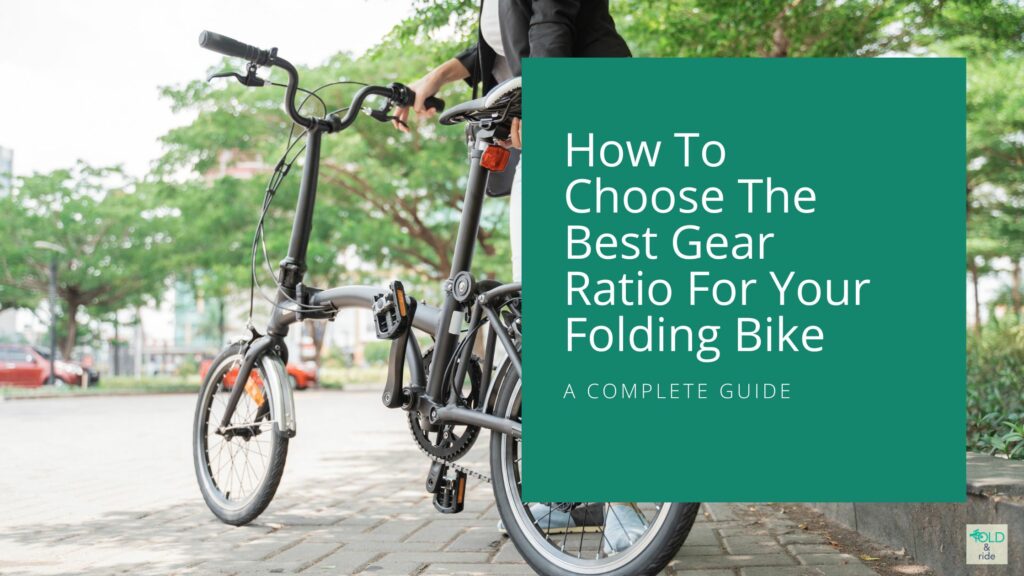Folding bikes are convenient, compact and seemingly perfect for those who live in a small apartment or cannot store a standard bike. However, the smaller size of a folding bike comes with downsides: their small wheels, combined with a limited gear range, makes them slower than other bikes.

As an Amazon affiliate, we earn from qualifying purchases.
Fortunately, manufacturers have discovered ways to tackle this problem. They started incorporating different gearing mechanisms in their products to increase the speed of the bike and make it more enjoyable to ride around even in hilly areas.
Today, you can find several different gear ratios within any given brand of folding bikes. How do you know which one is right for your needs?
Let us help you with that!
How Folding Bikes Work
Before we get into gear ratios, let’s first clarify how folding bikes work. When you ride a standard bike, the pedals are connected to the rear wheel via pedals connected to the rear wheel via a chain.
The chain drives the rear wheel through a crankset and a derailleur, which you can think of as a small gearbox. On a standard bike, the gear ratio is set by the size of the cranks.
The larger the cranks, the higher the gear ratio; the smaller the cranks, the lower the gear ratio.When you ride a folding bike, the process is slightly different. Since the bike folds, there isn’t enough space for a standard-sized chain.
As a result, folding bikes use a chain that is much shorter or completely enclosed in a plastic or metal casing. This makes it possible to have a much smaller frame and foldable design.
Gear Ratios: The Basics
The gear ratio is the relationship between the number of rotations of the wheel and the number of pedal rotations. The gear ratio of a standard bike is calculated by dividing the number of teeth on the front crankset by the number of teeth on the rear wheel.
For example, if you are using a bike with a 36-tooth front crankset and a 14-tooth rear wheel, the gear ratio will be 2.9. This means that you need to pedal the wheel 2.9 times to turn the wheel one full rotation.
Folding bikes have a lower gear ratio since their wheels are smaller. This means that you have to pedal more times to make the wheel turn once. The exact number of times is calculated by dividing the number of teeth on the front crankset by the number of teeth on the rear wheel multiplied by the diameter of the wheel.
Different Gear Ratios and Why They Matter
If you are going to compare folding bikes, you will discover that some of them use the same gear ratio, while others have different ones. What does this mean?
If the gear ratio is the same, the bikes have the same speed. If you are choosing between two folding bikes with the same gear ratio, you can pick the one with the better price or more features. However, if the gear ratio is different, one bike can be faster than the other.
One of the first things that you need to do when you are choosing a folding bike is to check its gear ratio. If two folding bikes have the same price, you can pick the one with the higher gear ratio. This means that it will be faster.
This can be helpful if you are going to use your folding bike for exercise, commuting or just casual riding.
Final Words
To sum up, when you are choosing a folding bike, you should first check its gear ratio. This way, you will know if you are getting a fast bike that is easy to pedal, or a slow one that is more suitable for casual riding.
If you are choosing a folding bike with a low gear ratio, you can still make it faster by switching its wheels with a set with a larger diameter.
For example, if you are using a folding bike with a 16-tooth front crankset and 27-tooth rear wheel gear ratio, you can make it faster by replacing its wheels with a set with a larger diameter.
